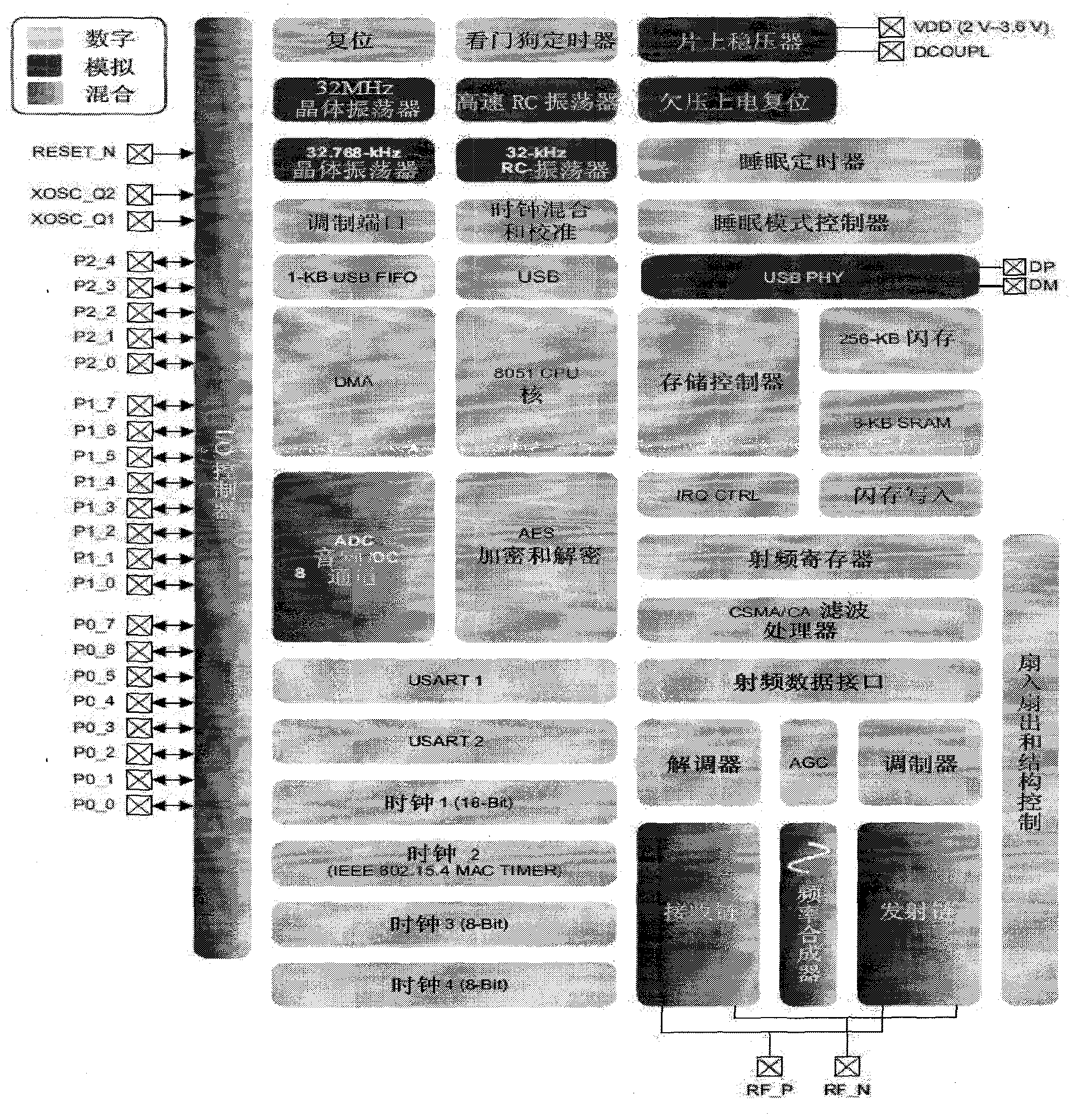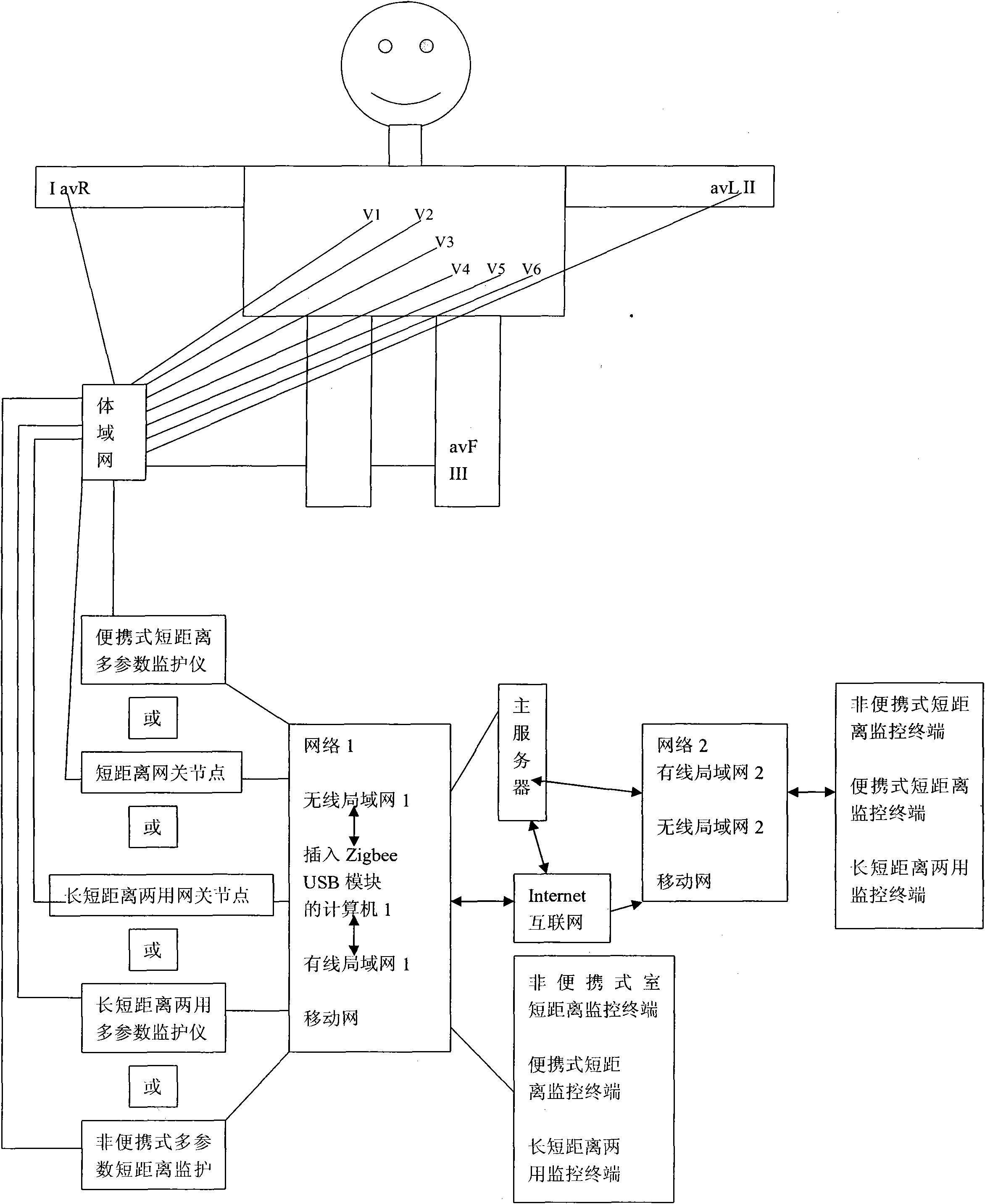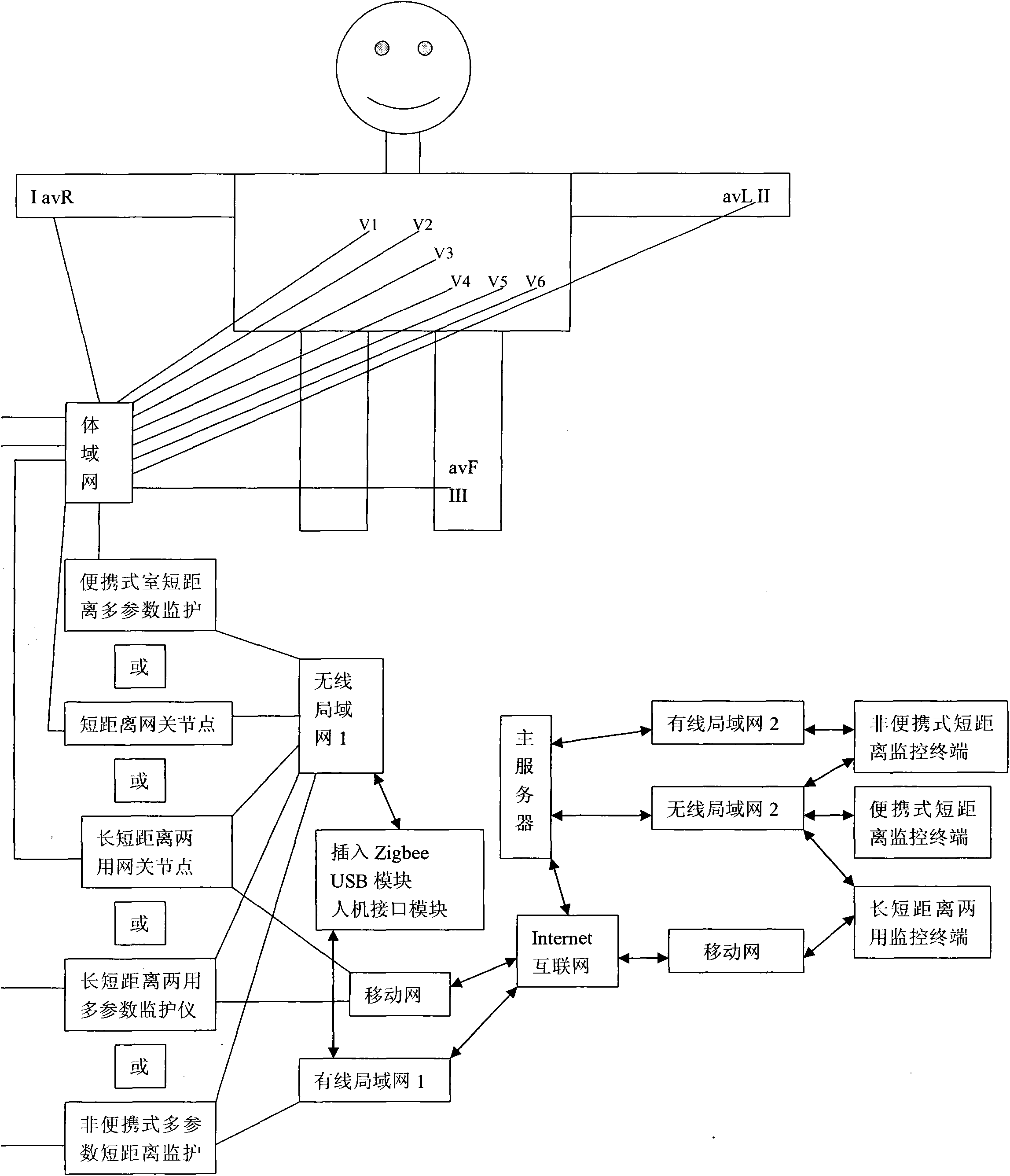At present, due to the lack of effective monitoring, the vast majority of cardiac arrests die outside the hospital, accounting for about 60%-70%, of which 1 / 2-3 / 4 die at home, 8-12% die at work, 6 % died in public places
[0005] 2. The occurrence of other non-sudden cardiovascular events also has a strong randomness,
ranging from several times / day to several times / year, the frequency, occasion, and time of occurrence cannot be predetermined, and the duration of the event is several seconds to several hours It doesn’t wait, and the cause of the occurrence cannot be determined because there is no ECG information left at the time of the
attack. The information obtained after the event is over may not help determine the cause
[0007] 3. Objects needing guardianship
[0010] 4. Due to the above requirements, near-distance monitoring is widely used, but traditional monitoring equipment is connected by many pipelines, that is, there are lead wires or other pipelines from the sensor to the
signal collector, the equipment is too bulky, and the
energy consumption is high , making it difficult for the guardian to receive long-term and comfortable near-distance monitoring
[0013] (2) Out-of-
hospital patients or other people with
special needs (including high-
risk groups indoors and outdoors) cannot conduct long-term, unaffected, real-time, and comprehensive monitoring due to the large number of lead wires in work, life, and study. Monitor ECG and other physiological parameters accurately
[0015] (1) There are only 3-6 leads on the chest, and this ECG is not a standard ECG. There are no important limb leads, and the
signal acquisition is not comprehensive. Abnormal location diagnosis, the diagnostic value is greatly reduced, not up to the
World Health Organization and the American Heart Association advocated - use 12-lead real-time continuous synchronous electrocardiogram to monitor the heart, that is, to timely measure the changes in the heart before the heart
attack, early Preventing serious consequences of a heart
attackIf the lead wires of the limbs are added, it will be difficult for the monitored object to walk, and the same problem as in the patent CN200977158Y will inevitably occur
[0016] (2) The integration level is not high. The ECG acquisition and analysis module is made of
integrated circuit board (PCB), and the size is about 20-40 times that of the
mobile phone T-F card. The device is still relatively large, and there is room for reduction
Realized ECG collection and
patient positioning communication, and can be used for remote monitoring, but there are still wires between the ECG collection module and the electrodes, the monitoring is limited to the chest, and there are no critical 6 limb leads
[0021] (3) The portable wireless
ECG monitoring device disclosed in the patent CN101474068A is used inside and outside the hospital to realize portable monitoring, but because it uses a Zigbee
wireless transmission module, the transmission distance is limited (about 100m), and it is connected to the
peripheral monitoring equipment of the hospital through a
USB module. Then access
the Internet to realize remote monitoring; but because there is no
remote communication module (such as GPRS), it cannot be used outside the hospital, ward or home far away, beyond the Zigbee
wireless transmission range; its electrodes are wired connections, 3 leads only
[0022] (4) "Research on Special Wearable
Monitoring System Based on
Wireless Sensors" and "Research on Remote Monitoring
System Based on Wireless Sensor Networks" proposed wireless transmission methods for monitoring nodes such as ECG,
blood pressure,
respiration, pulse, body temperature, and blood
oxygen saturation. Many pipelines have been reduced, but the
ECG monitoring node is based on the method of the article "Using S3C2410 to Realize a Three-Lead Remote
ECG Monitoring System", that is, three wired chest electrodes are used to connect the
ECG monitoring node, not based on "complete The
body area network of the "wireless" sensor network can be used for remote ECG monitoring. The
disadvantage is that the ECG electrodes are still wired and limited to the 3 leads of the chest, and there is no standard ECG
machine and Holter function.
[0023] In short, there is currently no one that does not affect the
pathological or physiological activities of the monitored object, has no lead wires, is miniaturized, has low
power consumption, and can be monitored for a long time. Real-time near-distance monitoring
system based on wireless ECG or other physiological parameter acquisition nodes and wireless body
area network 3-18 lead ECG and other physiological parameters
 Login to View More
Login to View More  Login to View More
Login to View More 


